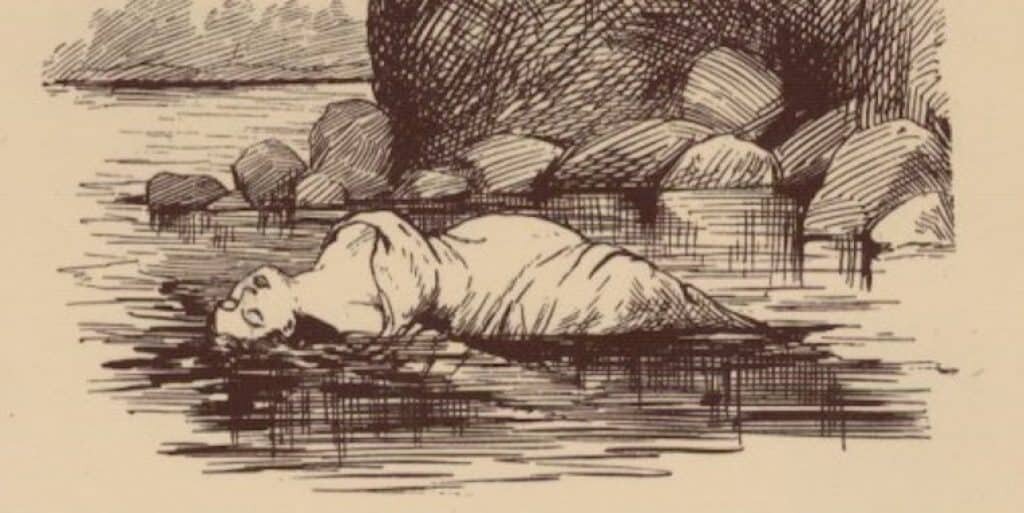On a walk along the New Jersey side of the Hudson River on July 28, 1841, several men spotted what they initially thought was a bundle of loose clothing in the water. They got a boat and found the body of a partially-clothed young woman floating in the river’s currents. The woman was clearly dead, so when the men managed to bring the body to shore, the authorities were sent for. When the coroner examined the body, he found thumb and finger marks on the woman’s throat. He claimed the woman had been choked to death and that the attack was committed by several persons. A man stepped forward and identified the woman as Mary Cecilia Rogers.

Events Leading Up to the Murder
The 20-year-old Mary Rogers lived in a boarding house run by her mother in New York City. On July 25, 1841, Mary spoke with her fiancé, Daniel Payne, saying she was going to visit a relative that day. The weather turned to thundershowers, so nobody worried when Mary did not return home that evening. They assumed she would stay overnight at the relative’s house. However, when she had not returned home the following morning, her mother and Payne became worried. That worry escalated when the relative stated she had not seen or expected Mary the previous day. Mary Rogers had vanished.
Cape Cod’s Gruesome Murder of the Lady of the Dunes
The employees from Mary’s job at a local cigar store also notice Mary’s absence. Literary notables as James Fenimore Cooper, Washington Irving, and Edgar Allen Poe frequented the cigar shop where Mary worked. More importantly, reporters and editors of New York City’s newspapers were also patrons of the store. After the discovery of her body, those same reporters put the cigar girl’s death on the front pages. The fervor of solving the crime became a local obsession. Some newspapers pinned the blame on roaming gangs of thugs, while others proclaimed Daniel Payne’s guilt.
More Evidence Found in Mary Rogers Murder
As time went on, the story began to fade somewhat. But it was pushed back to the forefront when the rest of Mary’s clothing was discovered in a thicket near where her body had been fished out of the Hudson. Immediately there was suspicion that the clothing had been placed there much more recently than Mary’s death. Too many legal authorities and curious onlookers had been all over the area and nobody had found the clothes. Additionally, a pair of white gloves was found in the thicket, but Mary’s body had been wearing gloves when it was taken out of the water.
You May Also Like: The Black Dahlia: Her Brutal Murder is Still Unsolved
The mystery deepened when Daniel Payne took poison and died on a bench near where Mary’s body had been discovered in the Hudson. Payne left behind a note:
[blockquote align=”none” author=”Daniel Payne”]To the World here I am on the very spot. May God forgive me for my misspent life.[/blockquote]
It was not clear if this was an admission of guilt for Mary’s death. The last twist of the tale concerned a deathbed statement of the owner of a tavern near the thicket. The woman stated that Mary’s death was the result of a botched abortion. Although this does not explain the marks on Mary’s throat and that her body was thrown into the Hudson after her death.
The Mystery of Marie Roget
The last word of the story is Poe’s. He moved the story and people from New York City to Paris and wrote his famous “The Mystery of Marie Roget” and claimed that a naval officer was responsible for Marie/Mary’s death.
Despite the efforts of law enforcement and other parties, Mary Rogers’ murder has never been solved.